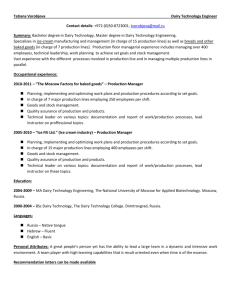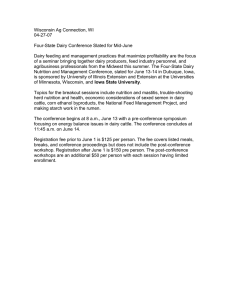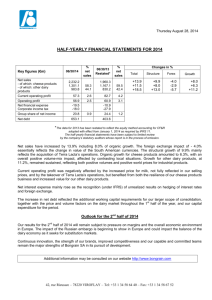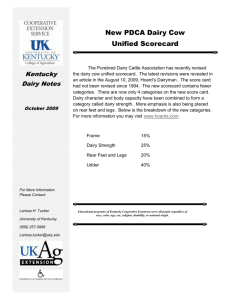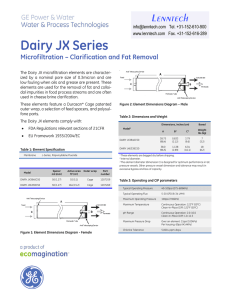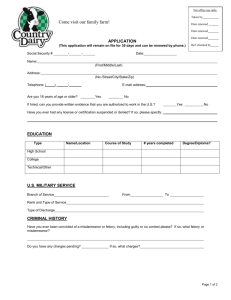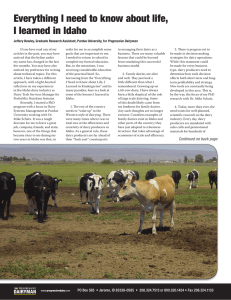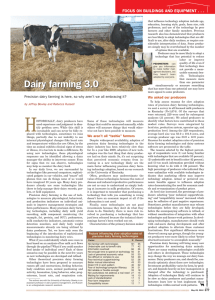Planning Changes in Your Dairy Farm Business?
advertisement
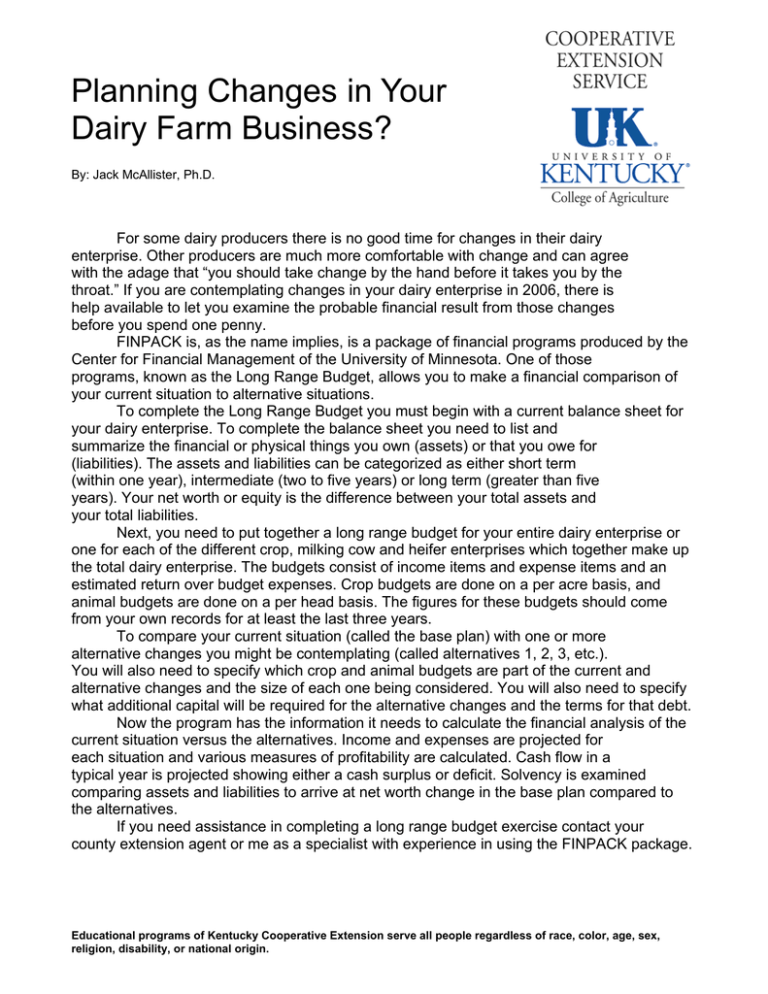
Planning Changes in Your Dairy Farm Business? By: Jack McAllister, Ph.D. For some dairy producers there is no good time for changes in their dairy enterprise. Other producers are much more comfortable with change and can agree with the adage that “you should take change by the hand before it takes you by the throat.” If you are contemplating changes in your dairy enterprise in 2006, there is help available to let you examine the probable financial result from those changes before you spend one penny. FINPACK is, as the name implies, is a package of financial programs produced by the Center for Financial Management of the University of Minnesota. One of those programs, known as the Long Range Budget, allows you to make a financial comparison of your current situation to alternative situations. To complete the Long Range Budget you must begin with a current balance sheet for your dairy enterprise. To complete the balance sheet you need to list and summarize the financial or physical things you own (assets) or that you owe for (liabilities). The assets and liabilities can be categorized as either short term (within one year), intermediate (two to five years) or long term (greater than five years). Your net worth or equity is the difference between your total assets and your total liabilities. Next, you need to put together a long range budget for your entire dairy enterprise or one for each of the different crop, milking cow and heifer enterprises which together make up the total dairy enterprise. The budgets consist of income items and expense items and an estimated return over budget expenses. Crop budgets are done on a per acre basis, and animal budgets are done on a per head basis. The figures for these budgets should come from your own records for at least the last three years. To compare your current situation (called the base plan) with one or more alternative changes you might be contemplating (called alternatives 1, 2, 3, etc.). You will also need to specify which crop and animal budgets are part of the current and alternative changes and the size of each one being considered. You will also need to specify what additional capital will be required for the alternative changes and the terms for that debt. Now the program has the information it needs to calculate the financial analysis of the current situation versus the alternatives. Income and expenses are projected for each situation and various measures of profitability are calculated. Cash flow in a typical year is projected showing either a cash surplus or deficit. Solvency is examined comparing assets and liabilities to arrive at net worth change in the base plan compared to the alternatives. If you need assistance in completing a long range budget exercise contact your county extension agent or me as a specialist with experience in using the FINPACK package. Educational programs of Kentucky Cooperative Extension serve all people regardless of race, color, age, sex, religion, disability, or national origin.

